
Für eine deutsche Übersetzung dieser Seite einfach die Brandenburger Flagge anklicken
 |
Click the Brandenburg Flag for a German translation Für eine deutsche Übersetzung dieser Seite einfach die Brandenburger Flagge anklicken |


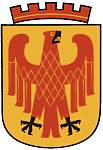 |
Home Towns - Potsdam, GermanyRise & Fall of the City Palace |
 |



 |
This site is part of our Potsdam, Germany site. Click the left turn sign to get back to the Potsdam Start Site. |


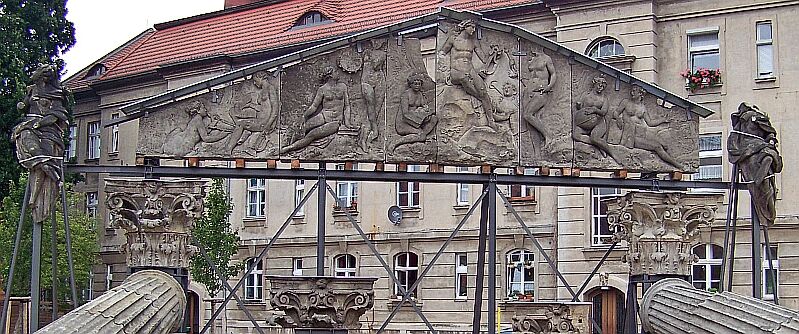 |

| Since 1751, the Potsdam City Palace was the official winter residence of the Prussian Kings, and, starting in 1871, the German Emperors (Kaiser), making it Potsdam's oldest castle. Unfortunately, there is not much left of it. |

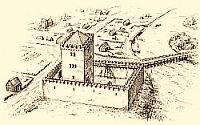 Ascanian Fortress 1220 |
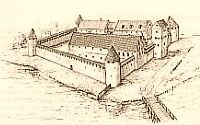 Renaissance Castle 1345 |
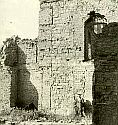 Remains of Katharina's Castle |
The location has been the site of several fortresses and castles since the times of the Roman Empire. Slavonic tribes that lived in the area until the mid of the 12th century built a fortress here in 993 to guard a nearby river passage. |
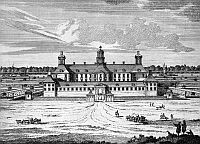 City Palace in 1691
City Palace in 1691
|
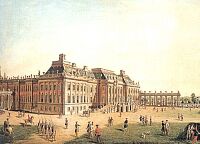 The Palace in 1751
The Palace in 1751
Fortuna Portal and Inner Court,
|
In 1157, the Ascanians conquered the area
and built a fortress a little bit west of the old the ring-fort. In about 1220, a watch tower and palisades were added to the fortress.
In the 1300s, the old Ascanian fortress was replaced by a renaissance castle.
 In 1598, Electress Katharina had the old building completely rebuilt in only eight months. But the electress died only four years later and the new owner, Squire Wolf Dietrich von Hacke turned the fortress into a sheep barn.  In 1660, Frederick William, duke of Prussia and Elector of Brandenburg ordered architects Memhardt, Nering and Chiese to start a massive reconstruction of the castle. In 1671, the Great Elector moved his entire court into the new building.  The castle got it's final shape by King Frederick II and Architect Georg Wenzeslaus von Knobelsdorff in 1751 and until the end of the German Empire in 1918, the German Emperors resided here at least for parts of the year.   After 1918, the building was turned into a museum and later also hosted offices of the city administration. During an allied bombing attack on 14th April 1945 the City Palace was burned out and in 1959, the remains were pulled down. Most sources today simply state that Communism and Castles just don't mix and that the East German communist government ordered the destruction of the castle for ideological reasons. We think, the story is a little bit more complex:  Prussia, and especially Potsdam was considered to be the cradle of German Militarism. Dismantling a place that in a sense was the starting point of two World Wars was supposed to send a signal to the world that post-war Germany had honestly broken with its past.  But no matter how we look at it, the crown jewel of Frederician Rococo is lost. Currently, the only remaining original parts are the royal stables, now hosting the Film Museum and one single sculpture group in the former Pleasure Garden. However, in 2007, city and state decided to rebuild the palace and to make it the furture site of the state's parliament. Currently, downtown Potsdam is a giant construction site but in 2012 the castle will be back in all its glory. |

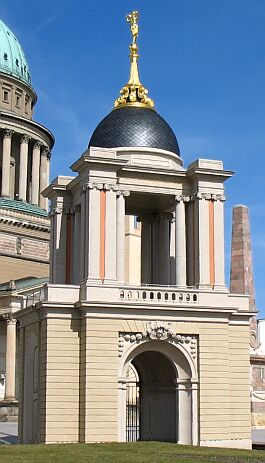 |
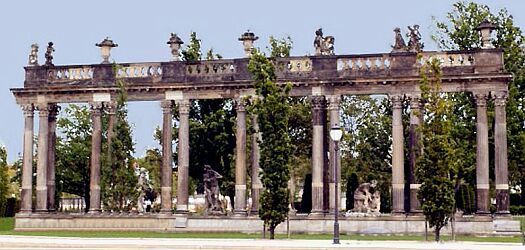 Long before plans to rebuild the entire palace were finalized, al little part of it was brought back to Potsdam. Based on original photographs and financed entirely through donations, the Fortuna Portal (picture left), once gate to the palace's courtyard was rebuilt in 2001. The only remaining original parts of the castle are the Wrestler's Colonnade (above) and the Royal Stables (below). Further down, we provided a table with links to both places.
|

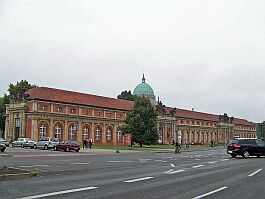 |
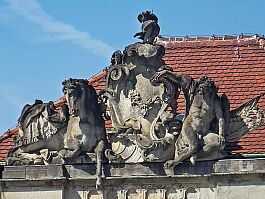 |
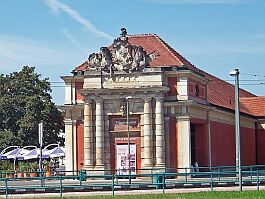 |

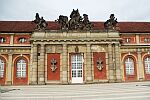
|
Royal Stables
 Built in 1685 as an arboretum, the Royal Stables are the oldest building complex in town and the only original remains of the City Palace. Today, they host Germany's oldest Film Museum. Click here to see Potsdam's oldest building and one of its most interesting museums. |
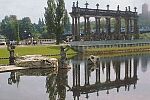
|
Pleasure Garden
 A park with 300 years of history, during which it was built, decommisioned, rebuilt, bombed, demolished, buried, forgotten, accidentally unearthed and finally restored. It was once part of the City Palace and contains some of the few original remnants of the castle.  Click here to visit Potsdam's oldest park. |



|


 Back to Potsdam Page |
 Back to Home Towns |
 Back to Germany Page |
 Back to English Main Page |
 Back to Start Page |